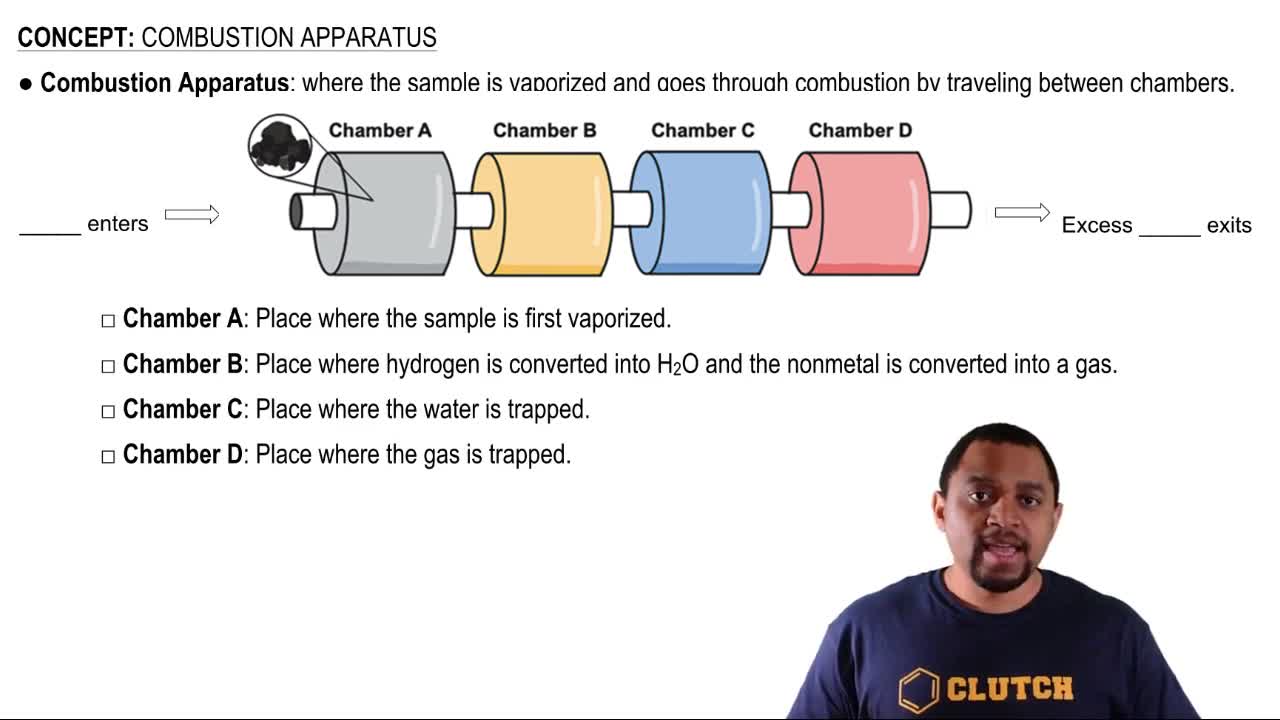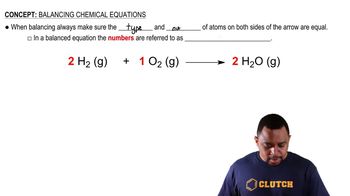Textbook Question
Draw a structure for each alkane. a. 2,2-dimethylpentane b. 3-isopropylheptane Draw a structure for each alkane. d. 4,4-diethyloctane
 Verified step by step guidance
Verified step by step guidance



Draw a structure for each alkane. a. 2,2-dimethylpentane b. 3-isopropylheptane Draw a structure for each alkane. d. 4,4-diethyloctane
Draw a structure for each alkane. c. 4-ethyl-2,2-dimethylhexane
Complete and balance each hydrocarbon combustion reaction.
a. CH3CH2CH3 + O2 →
b.CH3CH2CH=CH2 +O2 →
c. CH≡CH + O2 →
List all the possible products for each alkane substitution reaction. (Assume monosubstitution.) a. CH3CH3 + Br2 →
List all the possible products for each alkane substitution reaction. (Assume monosubstitution.) b. CH3CH2CH3 + Cl2 → d.
List all the possible products for each alkane substitution reac- tion. (Assume monosubstitution.)
c. CH2Cl2 + Br2 →